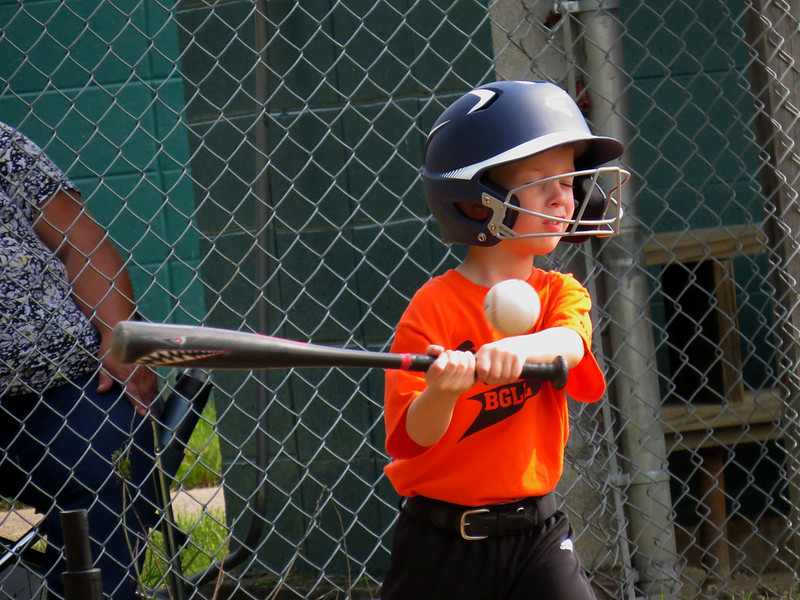Archive for August, 2020
Without a problem there can be no progress.
Without a problem, there can be no progress.
And only after there’s too much no progress is a problem is created.
And once the problem is created, there can be progress.
When you know there’s a problem just over the horizon, you have a problem.
Your problem is that no one else sees the future problem, so they don’t have a problem.
And because they have no problem, there can be no progress.
Progress starts only after the calendar catches up to the problem.
When someone doesn’t think they have a problem, they have two problems.
Their first problem is the one they don’t see, and their second is that they don’t see it.
But before they can solve the first problem, they must solve the second.
And that’s usually a problem.
When someone hands you their problem, that’s a problem.
But if you don’t accept it, it’s still their problem.
And that’s a problem, for them.
When you try to solve every problem, that’s a problem.
Some problems aren’t worth solving.
And some don’t need to be solved yet.
And some solve themselves.
And some were never really problems at all.
When you don’t understand your problem, you have two problems.
Your first is the problem you have and your second is that you don’t know what your problem by name.
And you’ve got to solve the second before the first, which can be a problem.
With a big problem comes big attention. And that’s a problem.
With big attention comes a strong desire to demonstrate rapid progress. And that’s a problem.
And because progress comes slowly, fervent activity starts immediately. And that’s a problem.
And because there’s no time to waste, there’s no time to define the right problems to solve.
And there’s no bigger problem than solving the wrong problems.
Bad Behavior or Unskillful Behavior?
 What if you could see everyone as doing their best?
What if you could see everyone as doing their best?
When they are ineffective, what if you think they are using all the skills to the best of their abilities?
What changes when you see people as having a surplus of good intentions and a shortfall of skills?
If someone cannot recognize social cues and behaves accordingly, what does that say about them?
What does it say about you if you judge them as if they recognize those social cues?
Even if their best isn’t all skillful, what if you saw them as doing their best?
When someone treats you unskillfully, maybe they never learned how to behave skillfully.
When someone yells at you, maybe yelling is the only skill they were taught.
When someone treats you unskillfully, maybe that’s the only skill they have at their disposal.
And what if you saw them as doing their best?
Unskillful behavior cannot be stopped with punishment.
Unskillful behavior changes only when new skills are learned.
New skills are learned only when they are taught.
New skills are taught only when a teacher notices a yet-to-be-developed skillset.
And a teacher only notices a yet-to-be-developed skillset when they understand that the unskillful behavior is not about them.
And when a teacher knows the unskillful behavior is not about them, the teacher can teach.
And when teachers teach, new skills develop.
And as new skills develop, behavior becomes skillful.
It’s difficult to acknowledge unskillful behavior when it’s seen as mean, selfish, uncaring, and hurtful.
It’s easier to acknowledge unskillful behavior when it’s seen as a lack of skills set on a foundation of good intentions.
When you see unskillful behavior, what if you see that behavior as someone doing their best?
Unskillful behavior cannot change unless it is called by its name.
And once called by name, skillful behavior must be clearly described within the context that makes it skillful.
If you think someone “should” know their behavior is unskillful, you won’t teach them.
And when you don’t teach them, that’s about you.
If no one teaches you to hit a baseball, you never learn the skill of hitting a baseball.
When their bat always misses the ball, would you think the lesser of them? If you did, what does that say about you?
What if no one taught you how to crochet and you were asked to knit scarf? Even if you tried your best, you couldn’t do it. How could you possibly knit a scarf without developing the skill? How would you want people to see you? Wouldn’t you like to be seen as someone with good intentions that wants to be taught how to crochet?
If you were never taught how to speak French, should I see your inability to speak French as a character defect or as a lack of skill?
We are not born with skills. We learn them.
And we cannot learn skillful behavior unless we’re taught.
When we think they “should” know better, we assume they had good teachers.
When we think their unskillful behavior is about us, that’s about us.
When we punish unskillful behavior, it would be more skillful to teach new skills.
When we use prizes and rewards to change behavior, it would be more skillful to teach new skills.
When in doubt, it’s skillful to think the better of people.
Image credit — Steve Baker
What You Don’t Have
 If you have more features, I will beat you with fewer.
If you have more features, I will beat you with fewer.
If you have a broad product line, I will beat you with my singular product.
If your solution is big, mine will beat you with small.
If you sell across the globe, I will sell only in the most important market and beat you.
If you sell to many customers, I will provide a better service to your best customer and beat you.
If your new projects must generate $10 million per year, I will beat you with $1 million projects.
If you are slow, I will beat you with fast.
If you use short term thinking, I will beat you with long term thinking.
If you think in the long term, I will think in the short term and beat you.
If you sell a standardized product, I will beat you with customization.
If you are successful, I will beat you with my hunger.
If you try to do less, I will beat you with far less.
If you do what you did last time, I will beat you with novelty.
If you want to be big, I will be a small company and beat you.
I will beat you with what you don’t have.
Then, I will obsolete my best work with what I don’t have.
Your success creates inertia. Your competitors know what you’re good at and know you’ll do everything you can to maintain your trajectory. No changes, just more of what worked. And they will use your inertia. They will start small and sell to the lowest end of the market. Then they’ll grow that segment and go up-scale. You will think they are silly and dismiss them. And then they will take your best customers and beat you.
If you want to know how your competitors will beat you, think of your strength as a weakness. Here’s a thought experiment to explain. If your success is based on fast, turn speed into weakness and constrain out the speed. Declare that your new product must be slow. Then, create a growth plan based on slow. That growth plan is how your competitors will beat you.
Your growth won’t come from what you have, it will come from what you don’t have.
It’s time to create your anti-product.
The Next Prime Directive – Software-Based Recurring Revenue
 If you know how what the system wants to be when it grows up, you can work in this line of evolution with 100% impunity. In that way, the key to success is learning how to see what the system wants to be when it grows up; learning to see where it wants to go; learning to see what it likes to do; learning to see what it wants to achieve; learning its disposition.
If you know how what the system wants to be when it grows up, you can work in this line of evolution with 100% impunity. In that way, the key to success is learning how to see what the system wants to be when it grows up; learning to see where it wants to go; learning to see what it likes to do; learning to see what it wants to achieve; learning its disposition.
What do systems want? Well, for business systems, here’s a hint: Business systems seek top-line growth (increased sales revenue).
When you align your work with what the system seeks (top-line growth) roadblocks mysteriously remove themselves out of the way. No one will know why, but the right things will happen. Don’t believe me that roadblocks will disappear? For your next proposal, build it around top-line growth and use “top-line growth” in the title, and see what happens. I bet I know what will happen and I bet you will get approval.
Assess the system to learn what is missing. Then, create a proposal to fill the vacuum. Or, better yet, fill the vacuum. Do you need to ask for permission? No. Do you need formal approval? No. Is it okay to work outside your formal domain of responsibility? Yes. Is it okay if you encroach on other teams’ areas of responsibility? Yes. Is it okay if people disagree? Yes. And why is that? Because the vacuum is blocking the path to top-line growth. And why is that a big deal? Well, because the Leadership Team is measured on top-line growth and they think it’s skillful to unblock the path to Nirvana. And why is that? Well, because they are judged on and compensated for top-line growth. And, because they told the Board of Directors they’d deliver top-line growth. And if there’s one thing a Leadership Team doesn’t want to do is to break a commitment to the Board of Directors.
Here’s a rule: When your work creates top-line growth, you don’t need to ask for approval. You just need to go faster.
Here’s another rule: When you help the Leadership Team deliver on its commitment to the Board of Directors to deliver top-line growth, your career will thank you.
There are different flavors of top-line growth, but the best flavor is called “recurring revenue”. This is when customers commit to a monthly payment. Regardless of what happens, they make the monthly payment. Think Netflix and Amazon Prime. Month in and month out, customers pay every. And you can plan on it. And the revenue you can count on is much more valuable than the revenue that may come or may not. And though they don’t know how, this is why companies want to do software as a service (SaaS). And for those that don’t can’t figure out how to do SaaS, the next megatrend will be hardware as a service (HaaS). It won’t be called HaaS, rather it will be called RaaS (Robotics as a Service), machines as a service (Maas), and AaaS (Automation as a Service). But, since AaaS sounds a lot like ASS, they’ll figure out a different name. But you get the idea.
And the new metric of choice will be Time to Recurring Revenue (TtFRR). It won’t be enough to create recurring revenue. Projects will be judged by the time to create the first dollar of recurring revenue. And this will make software only projects more attractive than projects that require hardware and far more attractive than projects that require new hardware. Hardware becomes a necessary evil that companies do only to create recurring software revenue.
All this comes down to Situation Analysis or Situational Analysis (SA). On a topographic map, SA is like knowing the location of the hills so you can march around them and knowing where the valleys are so you can funnel your competitors toward them to limit their ability to maneuver. It’s a lot more nuanced than that, but you get the idea. It’s about understanding the fitness landscape so you can speculate on dispositional or preferential paths that the system wants to follow in its quest for top-line growth.
If you don’t know how the system wants to generate top-line growth, figure it out. And, next, if you don’t know what the system needs to achieve to fulfill its desire for top-line growth, figure that out. And once you identify the vacuum created by the missing elements, fill it and fill it fast.
Don’t ask for permission; just do the work that makes it possible for the system to achieve its Prime Directive – software-based recurring revenue to create top-line growth.
Image credit — JD Hancock

 Mike Shipulski
Mike Shipulski